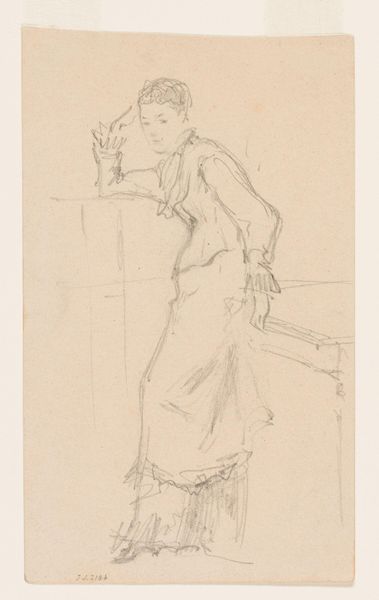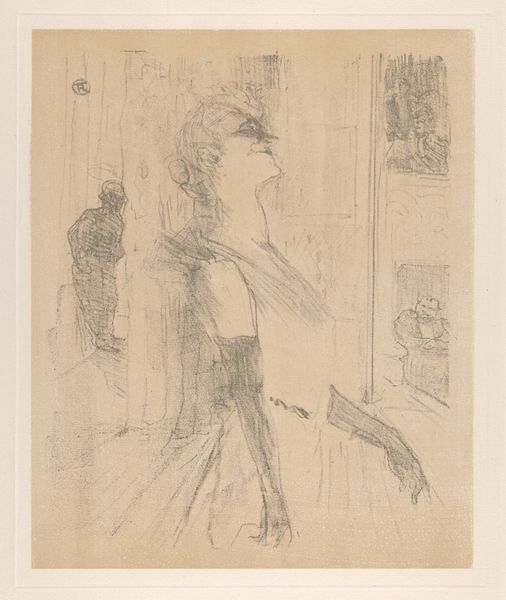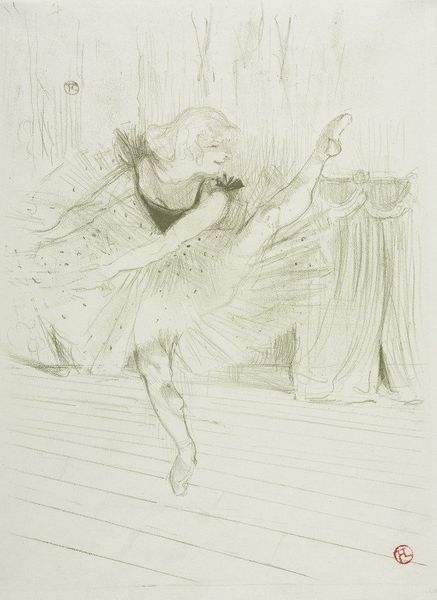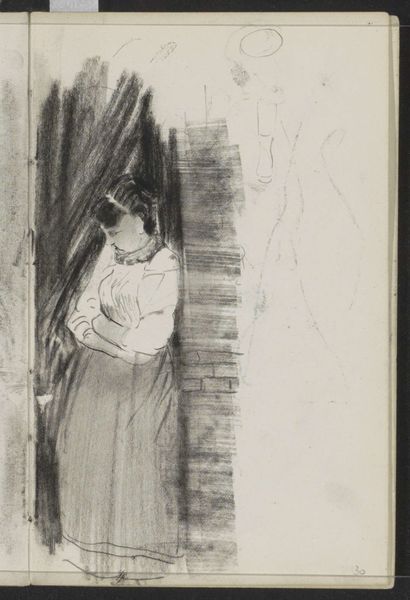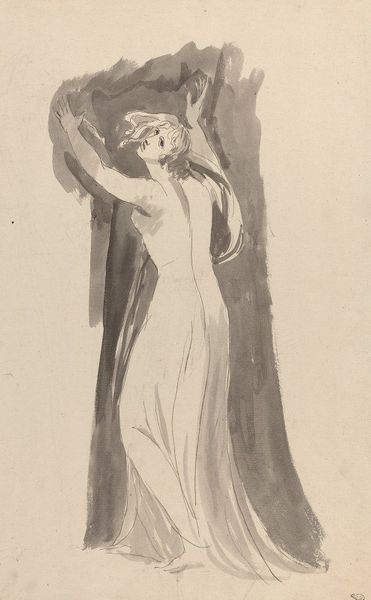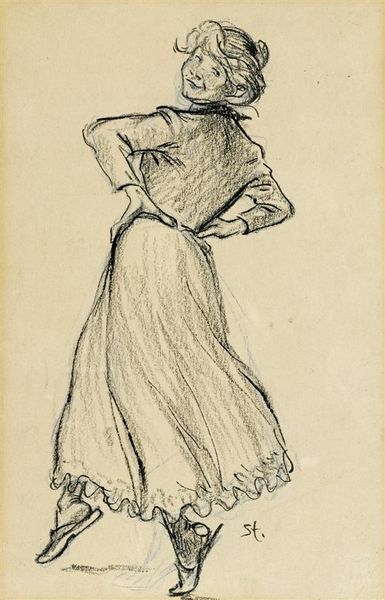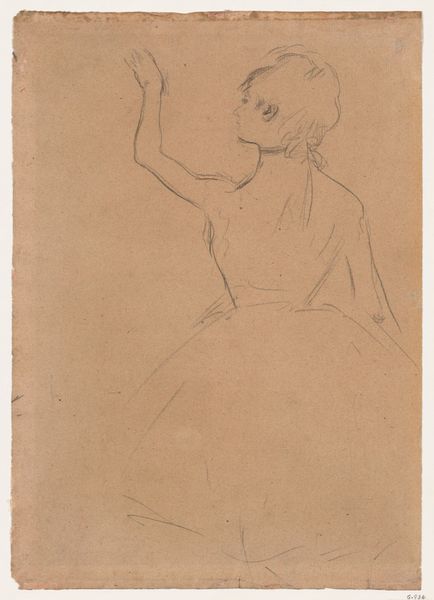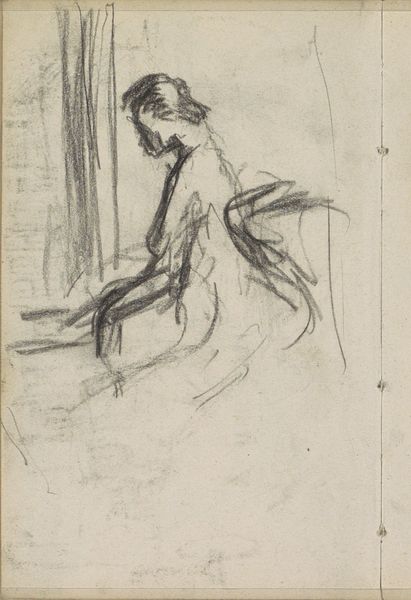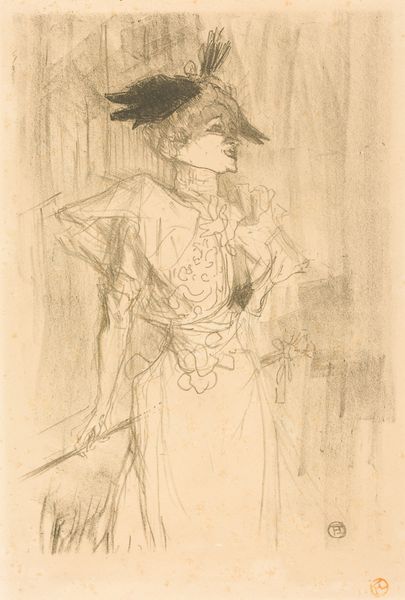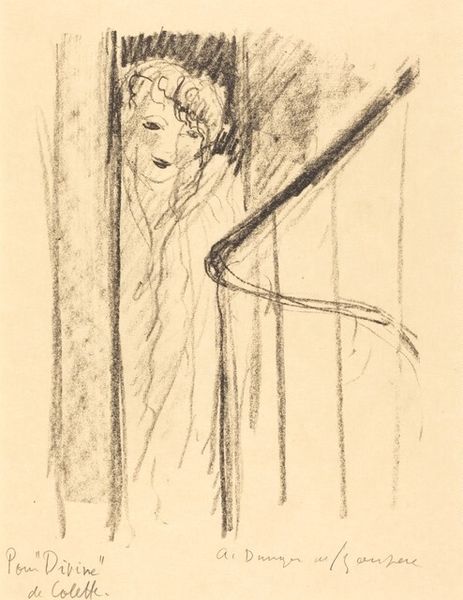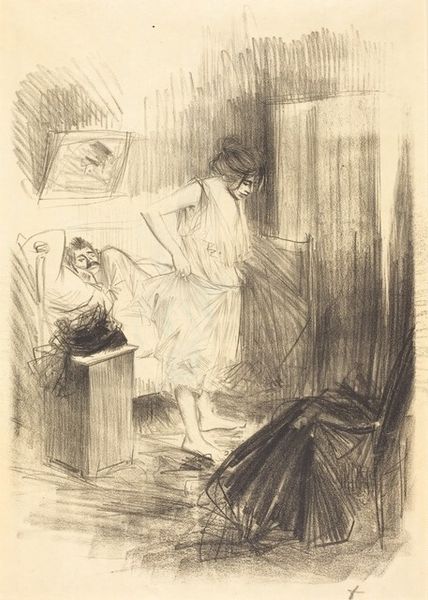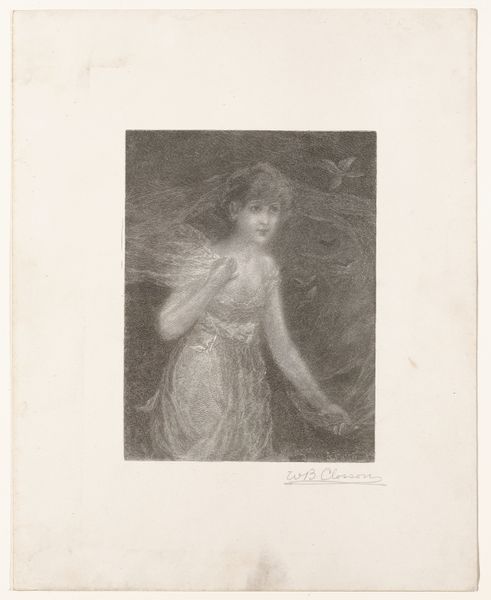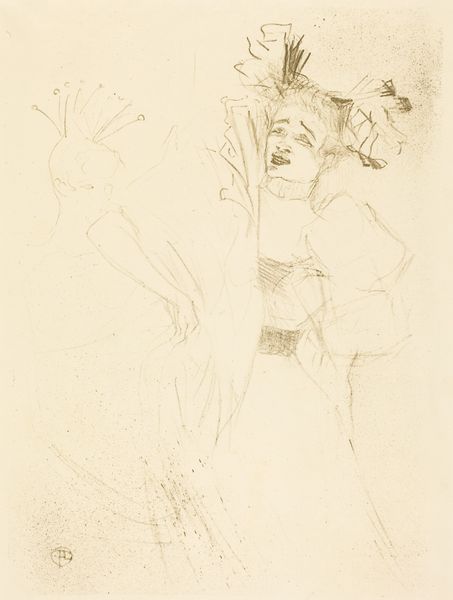
Dimensions: height 340 mm, width 160 mm, height 386 mm, width 287 mm
Copyright: Rijks Museum: Open Domain
Curator: Look, this is Henri de Toulouse-Lautrec's "Portrait of the Singer Yvette Guilbert on Stage" from 1894, housed right here at the Rijksmuseum. It's a captivating drawing rendered in pencil. Editor: It's striking. Stark, almost. The pose is so angular and dominating that it almost bleeds into the white, making Guilbert seem like she's wrestling the performance space itself. Curator: Indeed. Guilbert was a major figure in fin-de-siècle Paris—a celebrated café-concert singer who cultivated a distinct persona. Toulouse-Lautrec depicts her here in that element, capturing her unconventional beauty. She defied normative femininity, a symbol of female agency during a period of great societal change and artistic experimentation. The deliberate roughness in lines challenges established notions of ideal representation, doesn’t it? Editor: Absolutely. It's precisely those rough lines, the almost grotesque exaggeration of features, which draw attention. He has this wonderful economy of means: the gloves are defined by the merest squiggle. It feels almost brutal. Semiotically, the lines construct her essence. It almost distorts the common visual grammars that are meant to represent elegance. The almost total whiteness adds a ghostly touch. Curator: Exactly! Lautrec's work serves as a potent reflection of broader socio-political trends of the time. He critiqued bourgeois respectability by immortalizing these marginalized yet empowered figures of the Parisian nightlife. These were often outsiders, working-class performers and artists who pushed boundaries. We also should see Guilbert as part of the larger discussion on modern celebrity, in which figures created themselves, building images. Editor: And consider the stage. It acts almost as a metaphorical blank canvas; its very minimalism intensifies Guilbert's own image. Without ornate distractions, the composition is solely defined through her—her pose, presence. It forces a contemplation not just about the female image but how performance interacts with representation, and reality. Curator: In truth, this piece is not simply a depiction, but a statement on identity, on gender performance. Lautrec makes us question who is allowed representation, and how that shapes not only history but the present. Editor: For me, the piece’s formalism embodies these ideas with such grace and grit. The composition allows a concentrated reading that leads back to these concepts on image-making in a deeply thoughtful, visual cycle.
Comments
rijksmuseum about 2 years ago
⋮
This print was included in an album devoted to Yvette Guilbert. She specialized in melancholy chansons sung in a shrill or piercing tone. Lautrec here made a penetrating and slightly macabre portrait of the cabaret singer with her pale painted face. Some felt that Guilbert, not known for her beauty, should have put a stop to such representations of herself. Her craving for publicity had blinded her.
Join the conversation
Join millions of artists and users on Artera today and experience the ultimate creative platform.

